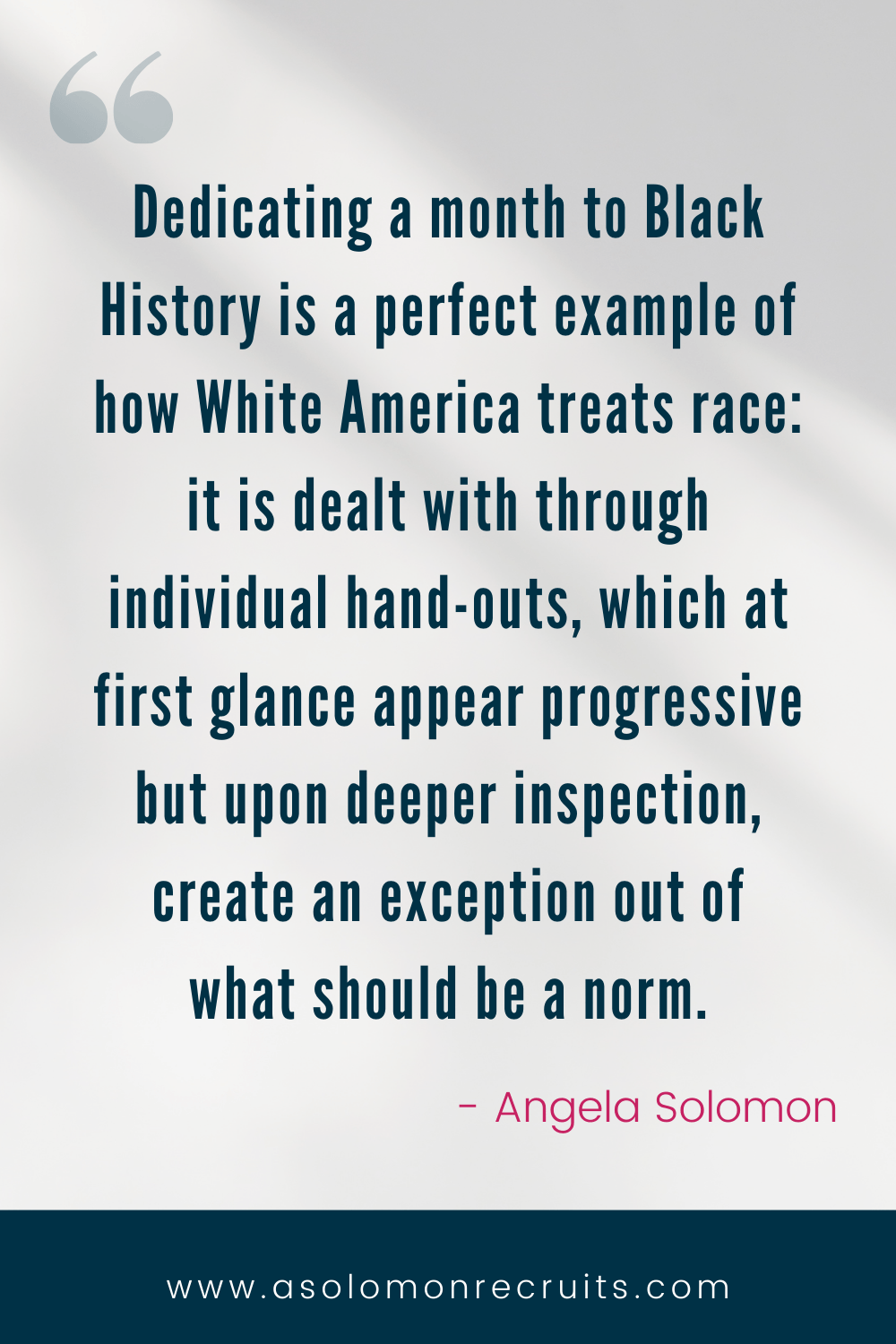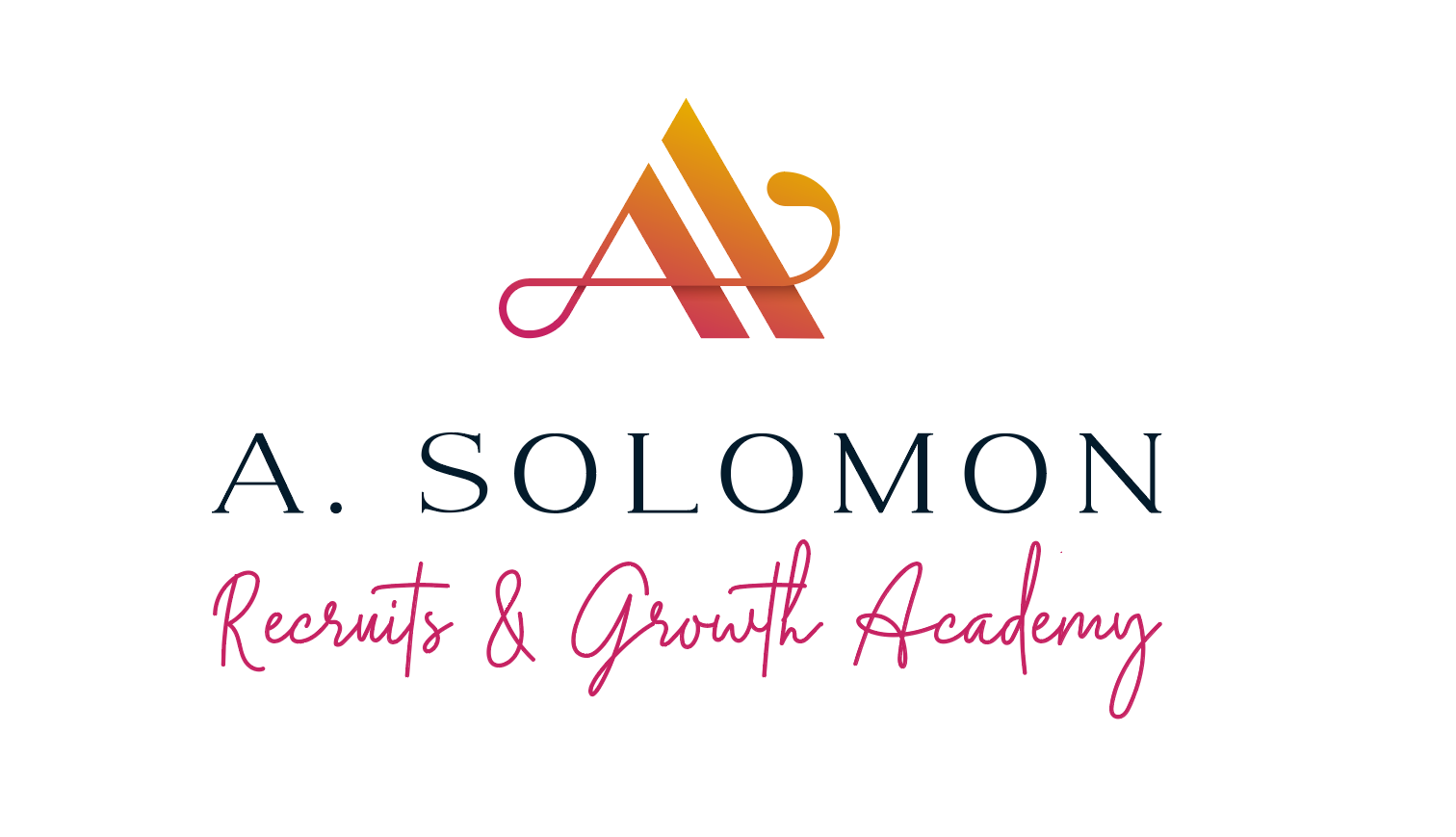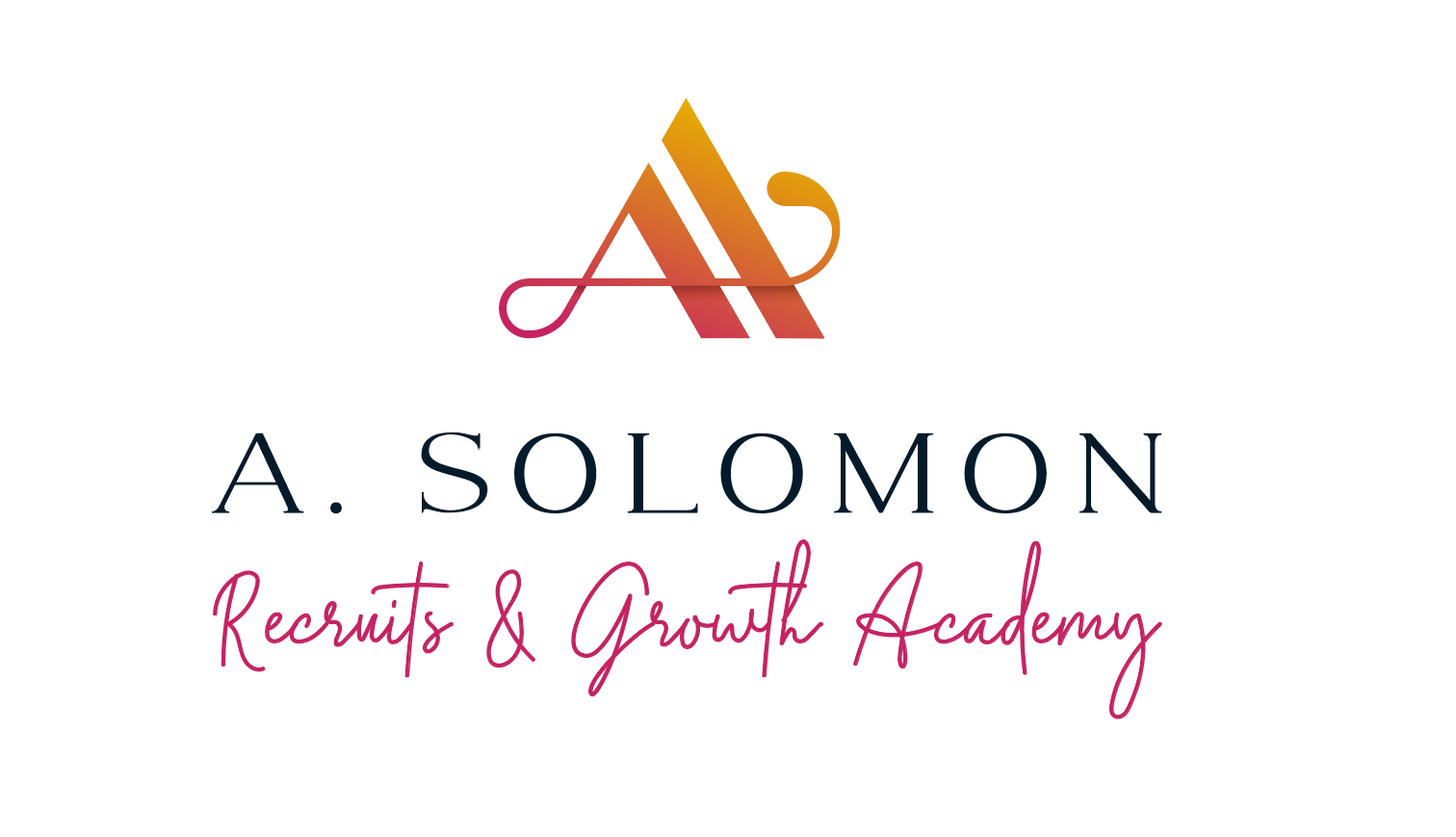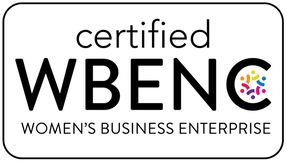A More Perfect Union Requires a More Inclusive History
February is Black History Month in America
As a Black American, every day for me is Black History Month yet for White Americans, only four weeks of the year are meant to raise awareness for the Black experience. Dedicating a month to Black history is a perfect example of how White America treats race: it is dealt with through individual hand-outs, which at first glance appear progressive but upon deeper inspection, create an exception out of what should be a norm. By giving Black history a month, it is at once spoken to and silenced. This sanctioned celebration of Black history “others” Black history and thereby perpetuates White America’s ability to ignore its larger legitimacy. Black America is not looking for hand-outs, we’re looking for legitimacy that is fully integrated into American culture. Afterall, Black history is just, well, history.
Black History Month is performative inclusion served over a bed of preserved separatism. This dynamic of speaking to equality while simultaneously dismissing it is especially poignant in the context of the ongoing debates as to whether or not critical race theory should be taught in schools or allowed into mainstream discourse at all. From what I understand, the primary argument for not including critical race theory in early educational curricula is not wanting to sow seeds that disparage and vilify White American history. These arguments go on to say that teaching White children about the power structures in our society that perpetuate systemic racism will teach children that Whiteness is inherently racist in a way that will be traumatic for a young White child to learn. These arguments go beyond critical race theory and extend into other narratives that reframe American history with more Black inclusion.
In an interview criticizing the 1619 Project on similar grounds, Mary Grabar, author of Debunking the 1619 Project: Exposing the Plan to Divide America, said the following:
I think the goal of the 1619 Project is to divide people, especially between the races, and it does so at a very young age, which I think is extremely dangerous. It’s abusive to kids to instill in them this suspicion of others based on their race.
When I heard this quote, I thought about the countless conversations that I’ve had with my Black children as to how to conduct themselves in White society so as to not attract suspicion, or worse, outright prejudice and violence. I thought about the history lessons that I taught my children at home when they came home from school confused as to where their culture fit into their country’s history. They were confused because their teachers and textbooks taught a version of history that didn’t include them. When I hear this quote, I wonder, why is it traumatic for children to learn about racial division when it already surrounds them? The result of the omission of addressing racial tension is the creation of false realities in which White children grow up ignorant to the systems that do divide them from their Black peers, and Black children grow up in an environment that gaslights them, insisting that all is equal when in reality, it is not. You cannot create a new reality simply by denying the existence of another one. Black children feel the reality of their inequality whether or not it is spoken to. They feel it when they see unequal representation of Black people in positions of power. They feel it when the media promotes a binary narrative of Black people as either victims or villains while White people are granted the humanity of more diverse and nuanced narratives. They feel it when they go into a convenience store with their white peers and they are the only one who is regarded and surveyed with suspicion.
When schools fail to teach history and present-day reality in a way that is honest about the Black experience, they drop a ball that must then be picked up by Black families, like I did when I taught my young son to never talk back to a cop even though his White friends may be able to. Or when I taught my daughters that although our ancestors were slaves, their ancestors were kings and queens of African societies that respected and venerated them; that although American history frames our people as victims, we are not—we are worthy of the same treatment and respect as anyone else.
The fact that I had to teach my children about a Black experience that was entirely omitted from their classrooms increases the division between the reality that exists at home and the reality that exists in mainstream America. It is not the act of teaching about division that creates it. It is the act of denying division that amplifies it.
I don’t believe that this is the intention of the majority of people who denounce critical race theory. While outright racism does, of course, exist, I believe that Mary Grabar’s above statement was said out of a genuine (albeit ignorant) desire to galvanize race-agnostic unity around patriotic pride. That is, teaching one agreed-upon narrative of American history that all Americans, race aside, can rally behind. While a desire for common humanity and unity may inspire these arguments, they are being made in a way that is ineffective, overly simplistic, and lacking awareness. Just because we want unity and equality doesn’t mean that we don’t have to do the work to get there. We cannot wish equality into existence by denying the existence of inequality. If we are all to unite around one common narrative, that narrative must include everyone’s story within it.
Right now, the narrative is reductionist. Both sides of the debate play off of tropes of good and evil that capture emotions but fail to accurately represent the complexities of reality. Any argument that rests on the lazy archetypes of good and evil will be reductionist and will divide as opposed to unify.
My challenge for all of us this Black History Month is to take the time to consider the legitimacy of opposing narratives to the one we subscribe to, to educate ourselves as to historical facts in a way that is free from ideology, and to increase our capacity for complexity and nuance. Afterall, any curation of facts that tells just one linear story will necessarily be reductionist. Reality is plural, reality is inclusive. Our understanding of history must be as well.

Earbuds Pairing: "A Change is Gonna Come" by Sam Cooke
Sam Cooke wrote A Change Is Gonna Come in the midst of the Civil Rights Movement in response to the experience of being turned away from a whites-only motel in Shrevepoint, Louisiana. At this point, he was already a well-known singer. When he and his entourage challenged the motel-owner’s discrimination, the motel-owner called the cops, who were then waiting for them when they arrived at the next motel down the road. They where they were arrested for “disturbing the peace”. In 1964, preserving White peace that was founded on fear, fragility and ignorance was worth subjecting Black people to overt discrimination, violence and imprisonment.
In 2022, White society will still gladly subject Black people to trauma and inequality in order to preserve White comfort. The debate over critical race theory must be approached not solely from the perspective of White comfort, but also from the perspective of Black trauma.
In a society in which those who hold power are comfortable, there is little motivation to make concessions for the betterment of a group of people who are structurally incapable of advocating for themselves. But if we are a society that claims to aspire toward inclusion, equality and the betterment of all people, not just those in power, it is necessary.







